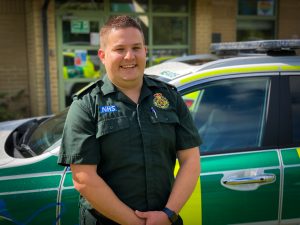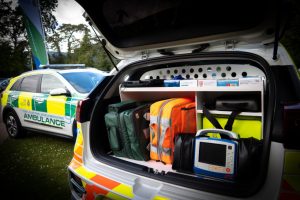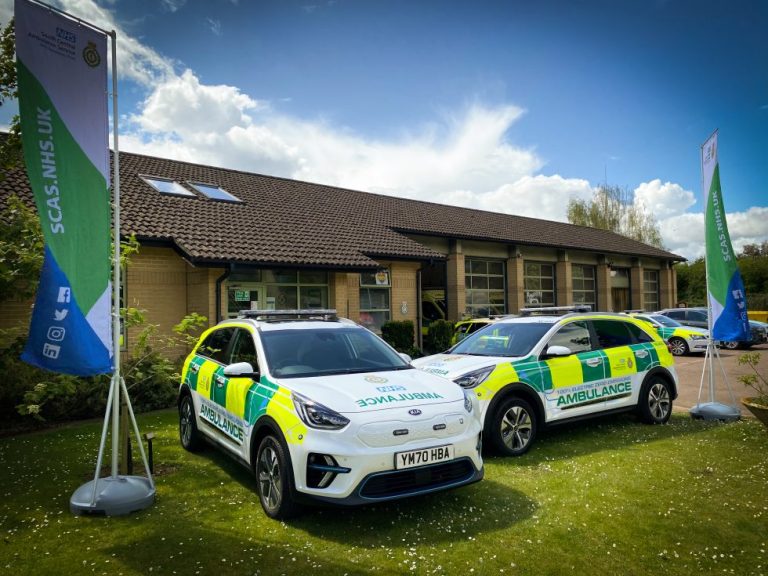Following the launch of the South Central Ambulance Service NHS Foundation Trust’s (SCAS) full electric emergency response vehicles, Quadrant Health sits down with their Head of Education – Driving, Nick Lambert to learn more.
South Central Ambulance Service NHS Foundation Trust (SCAS) has introduced two Kia e-Niro vehicles into their fleet. These vehicles have been designed and adapted by South Central Fleet Services.
The e-Niros contain all the equipment, medication and supplies to allow first responder paramedics from SCAS to reach patients quickly under emergency driving conditions.

Speaking about the launch of these new, zero-emission vehicles, Nick Lambert, Head of Education – Driving at SCAS said: “It is just the start of our electric journey.”
SCAS are the only ambulance service using the Kia e-Niro their electric replacement for diesel first response vehicles, Nick explained their benefits.
“They have a driving range of up to 282 miles on a single charge.” This is well within the estimated 90-100 miles that an emergency response vehicle will cover in an average 10-hour operational shift.
Introducing electric first response vehicles is key to SCAS’ was key to their decarbonisation commitments.
“We’ve committed to a 50% carbon emission reduction by 2030,” Nick told Quadrant Health. As “vehicles are [their] biggest challenge,” these e-Niros signify the start of their electrified fleet.
“Over the next three years, we anticipate we’re going to be looking to roll our electric vehicles to completely replace the fleet,” Nick continued.
Over the next three years, we anticipate we’re going to be looking to roll our electric vehicles to completely replace the fleet
To facilitate this shift towards electric, zero-emission vehicles, Nick said: “All of our new centre moving forward are going to have electric charging facilities. […] We’re not just thinking of our frontline vehicles, we’re thinking about our operating model.”
Becoming part of the solution
Recognising the need to switch to electric vehicles to remove harmful pollutants from the air, Nick explained that for SCAS “a key thing is to help people and to help get people better.”

With increased recognition around the harmful effects of car emission on public health, SCAS want to be “part of the solution” rather than “part of the problem.”
Nick told Quadrant Health, “[Lowering harmful emissions] is actually part of the wider aims of our organisation. It fits in quite well that sustainable vehicles for health in patients is really important.”
Committed to decarbonising their operations and improving air quality, SCAS has “already started to think about electric ambulances,” explained Nick.
Although the technology for electric ambulances “isn’t quite there”, Nick said, “We’re going to start trialling them and see how we can fit them in.”
Initially, electric ambulances may be used for non-urgent services such as patient transport services which do fewer miles and have planned breaks.
Rounding up the interview, Nick said: “We’ve got some challenges ahead of us, but with technology moving in the way that it is and at the speed that it is, we think it is doable that by the end of this financial year that we’ve got at least one or two electric ambulances within the fleet. […] It’s really exciting.”

